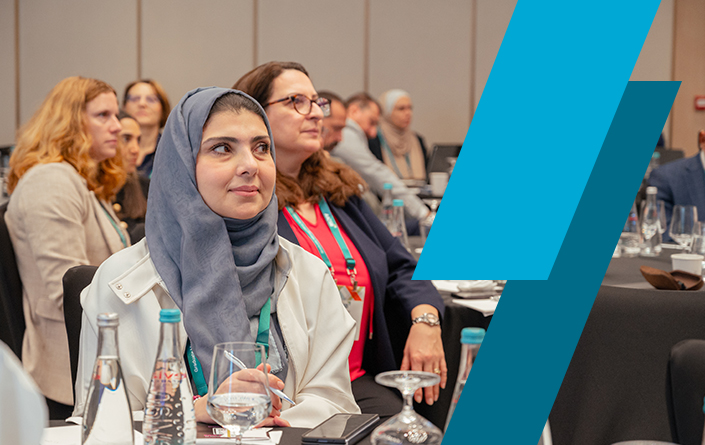Leveraging the SDGs for Societal Impact
“We are a force for positive change in the world.” In 2017, Rotterdam School of Management (RSM) at Erasmus University in the Netherlands adopted this simple statement to reflect its new mission. This represented a dramatic shift from the earlier mission of the school, which centered around more traditional goals such as “to provide excellent and responsible education” and “to base our teaching on our sound and world-leading research.”
Simultaneously, RSM faculty and administrators were inspired by “I Will Be a Hummingbird,” a story told by the late Wangari Maathai, a Kenyan environmentalist and Nobel Peace Prize winner. The story's main premise is that change starts with the power of individuals taking responsibility. This message strongly resonated with us because our school had been running an internal campaign called “I Will” since 2009. As part of the campaign, which is still ongoing, students, faculty, and alumni are asked to set personal “I will…” goals to achieve social impact.
While our new mission has unleashed much energy and passion among the broader RSM community, it also generated some skepticism. Stakeholders asked many probing questions: What, exactly, does it mean to be a force for positive change in the world? What type of student do we want to attract and educate? What type of research contributes to positive change? What consequences does the mission have for the way RSM organizes its operations and facilities?
These questions presented us with a typical management problem: We were forced to determine how to fill the gap between the promise of our new mission and our performance. In the end, we realized two things. First, we needed a clear framework for action if we wanted to achieve results. And, second, to have the greatest impact, we would need to expand our mission far beyond our own community.
Connecting the SDGs to Business Education
RSM choose the United Nations’ Sustainable Development Goals, part of the U.N.’s 2030 Agenda for Sustainable Development, as its framework for effecting positive change. By offering shared goals and a common language for governments, businesses, and civil organizations, the SDGs made our discussions around implementing positive change more tangible.
Before officially announcing the mission, the dean and the director of the initiative held roundtable discussions with every department to discuss how people could connect their roles and personal sources of inspiration to the SDGs. During these discussions, we left plenty of time for constructive criticism, debate, and the exchange and generation of ideas. Colleagues felt supported and encouraged to give input, collaborate, and contribute.
Next, the school set aside a small portion of its annual budget to launch a formal positive change initiative within our school. As part of this initiative, the school assigned a small staff—a director, a trainee, a part-time sustainability coordinator, and two student assistants—to help identify potential opportunities to execute our plans and work with faculty to develop new teaching materials.
Stakeholders asked probing questions: What does it mean to be a force for positive change in the world? What type of student do we want to attract and educate? What type of research contributes to being a force for positive change?
Our financial investment in these staff assignments was not large compared to other programs within the school, but its impact has been significant. These staff members have launched a variety of impact-driven initiatives. These include creating a plant library for homes and offices, setting up the RSM Hummingbird Fund to provide grants for small student-led projects that create local impact, and developing an SDG escape room on campus. This team also spearheaded the push to incorporate the topic of positive change in our annual employee performance and development reviews.
We found that the idea of working toward the SDGs and viewing business as part of a broader global ecosystem resonated with the members of our community. Many faculty members, students, and corporate and nonprofit partners—such as Philips, Tony’s Chocolonely, WWF Chile, ABN AMRO, The Dutch Development Bank, and others—volunteered their time to ensure the success of the initiative, providing interviews, content for videos, and examples of real business cases from their organizations.
Sharing Resources, Broadening Access
As our next step, we created SDG-related educational materials, including videos, case studies, and massive open online courses (MOOCs). While we initially created these resources, all in English, for our own students, we knew they had the potential to have impact on a more global scale. For that reason, we have made all of the resources mentioned below free for any individual or organization to use, and we encourage everyone to provide us with feedback on how they might be improved:
A video series. We have recorded a collection of 77 videos that highlight not only how management knowledge and research are relevant to each of the SDGs, but also how real businesses, governments, and organizations can apply these insights.
The RSM SDG Case Collection. This recently launched collection of 18 teaching cases builds on the video series. Developed by RSM’s Case Development Centre in collaboration with RSM faculty, these materials are designed to help educators and students around the world engage with the full extent of sustainable development, from the sustainability challenges business face to the ways businesses are contributing to achieving the SDGs.
The subjects are wide-ranging, including employee conditions in warehouses, the crisis in the Mória Refugee Camp in Greece, water solutions for rural areas in Brazil, and the role of corporations in creating peace in The Philippines. Each case zooms in on the specific elements of one SDG, while presenting students with the bigger, systemic issues addressed by the SDG framework. Since the collection’s launch in the fall of 2020, these cases have been downloaded 1,600 times by students, faculty, and schools around the world.
If business schools want to inspire students, professors, and organizations to freely share their talents, they must create learning opportunities that benefit more than just the few.
The RSM Positive Change Series. This series presents new ways of designing corporate strategy and future-proof business models. The four editions published so far focus on effective corporate involvement in the SDGs, ecosystem restoration with a business approach, the principles of sustainable finance, and the transition toward a sustainable finance system. The publications are being used in our courses and by universities worldwide.
Free online courses. We currently offer four MOOCs related to the SDGs. As we designed these offerings, we made certain that each MOOC would help students develop their knowledge of the SDGs (what are they, what solutions already exist?), critical thinking skills (what dilemmas, tradeoffs, and interdependences do the SDGs present?), and personal connections to these global problems (how can the world leverage the "power of one" to make positive change?).
These MOOCs include:
- Driving Business Towards the SDGs, which explores what dilemmas and tradeoffs are involved with each of the 17 SDGs, how management insights can be applied to each of them, and what individuals can do to contribute. Those who complete the course can request a free “Positive Change Ambassador” badge, which they can add to their LinkedIn profiles. The course was awarded the 2019 Award of Excellence from the SDG Academy and the U.N. Sustainable Development Solutions Network. To date, 20,000 people from all over the world have followed this course, rating it 4.8 out of 5.
- Principles of Sustainable Finance, which presents ways that the financial sector can shift its approach to help create a healthy planet and a sustainable economy. Participants learn that the future of business is about value creation, not money; in addition, they discuss how businesses can effectively and profitably transition to sustainable business models and what it will take to build an economy that works for all. More than 20,000 people have enrolled in this course to date.
- A Business Approach to Sustainable Landscape Restoration, which addresses landscape degradation, which is contributing to the depletion of the Earth’s finite resources, driving species extinctions, and undermining quality of life for two-fifths of humanity. Rather than leaving participants feeling powerless against such a wicked problem, this course shows them how they can contribute to solutions, such as business-driven landscape restoration, and what skills they’ll need to preserve the planet for future generations.
- Business Model Innovation for Sustainable Landscape Restoration, which is intended for learners from environmental, business, and other backgrounds. Participants learn that, currently, about two billion hectares of land on the planet—an area about twice the size of China—can be restored. In addition, they discuss three real-life cases of landscape restoration in Spain, Iceland, and Portugal that illustrate each step of the land restoration process. The course also highlights how, by investing in this model, businesses can receive four returns on investment, in the form of natural, social, inspirational, and financial capital.
Together, these materials help inspire and guide students to act on their passions, implement their ideas, and scale their entrepreneurial solutions. They also help students understand that to achieve the SDGs, partnerships with “strange bedfellows” will be essential—not only between universities and for-profit businesses, but also among think tanks, civil society organizations, and individuals. Our goal is to ensure that, as future business leaders and entrepreneurs, our students learn how to create practical solutions that address wicked problems around the world.
Building a Network of Positive Change Agents
We view the large number of downloads and participation rates that we have had so far as evidence that people worldwide are interested in learning how to effect positive change. We will continue to use our professional and personal networks to share these resources. In addition, we are planning several PR initiatives to increase awareness, particularly among schools that might lack the resources to develop their own portfolios of SDG-related materials.
But while we will continue to develop more free resources with partner organizations, we believe the need for such educational materials far exceeds what we can produce. Higher education institutions often have the means to provide free programs and initiatives, but the question is, do they have the will? If business schools want to inspire students, professors, and organizations worldwide to freely share their talents, they must create learning opportunities that benefit more than just the few. In a connected world, the power of potential learners to solve the world’s problems should not be limited by their finances, opportunities, or mobility.
There is no better time than now for business schools around the world to share their collective knowledge with the impassioned and growing sustainability movement, made up of people from all walks of life who want to create prosperity for all. We can be a far greater force for positive change together than any of us can be alone. If the community of business schools comes together, we can build a network of forceful, motivated, and knowledgeable positive change agents for business, society, and the planet.






